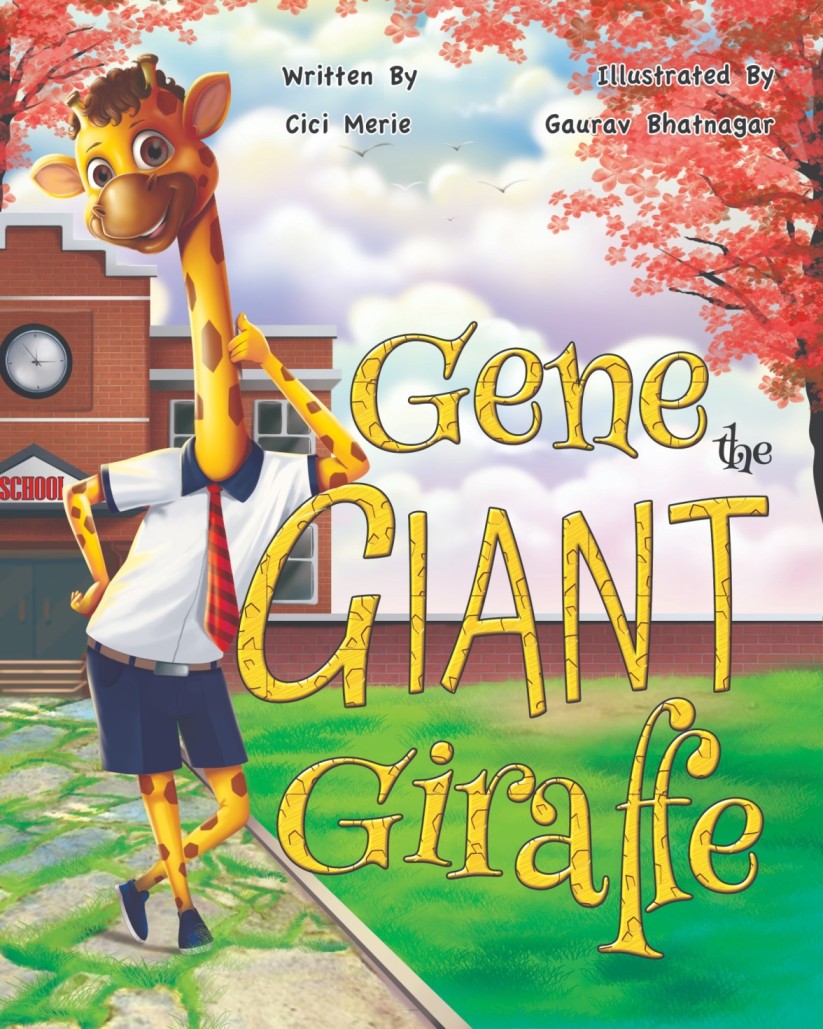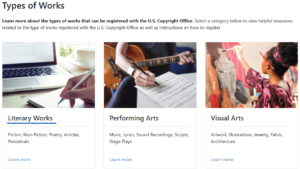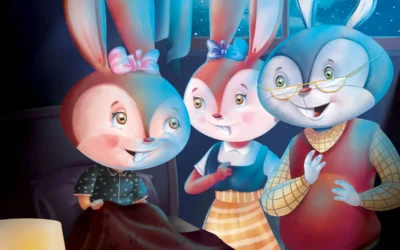
Written by award-winning illustrator Gaurav Bhatnagar.

Gaurav Bhatnagar
Children's Book Illustrator, author, and Self Publishing Strategist
Key Takeaways
✅ Plan and Prepare: Ensure your manuscript and artwork are complete and in final form before beginning the registration process.
✅ Understand Your Rights: Copyright protects the specific expression of your ideas, not the ideas themselves. Custom illustrations and unique text are fully covered.
✅ Human Creativity is Essential: A.I. tools can be used to enhance your work, but significant human input is required to secure copyright.
✅ Follow the Process: Register your work through the US Copyright Office by filling out the online form, paying the fee, and submitting your deposit.
✅ Stay Informed: Keep up with changes in copyright law, especially regarding A.I.-generated content, to ensure continuous protection for your creative works.
Introduction
Can A.I. steal my children’s book illustrations or the content?
If you’re an author looking to protect your creative work, you’re probably asking, “How do I copyright a children’s book in the US?” or “What are the rules for copyrighting A.I.-assisted artwork?” This guide is designed to answer these questions.
- 📝 Step-by-step copyright registration for text and artwork.
- 💰 2024 fees and processing times (spoiler: starts at $45).
- 🤖 Critical A.I. copyright rules for authors and illustrators.
Why Copyright Your Children’s Book?
Copyright isn’t just legal jargon—it’s your creative shield:
✅ Stop Copycats: Sue infringers for using your text/art without permission.
✅ Monetize Your Work: License characters for merch, apps, or translations.
✅ Boost Credibility: Publishers and agents trust registered works.
By copyrighting your children’s book, you ensure that your unique story, artwork, and creative expression are legally protected.
Real-World Example:
A client’s book was copied by a print-on-demand scammer. Her copyright certificate helped Amazon remove the counterfeit in 48 hours.
Understanding Copyright: Scope and Exclusions
| Protected | Not Protected |
|---|---|
| Original manuscript | Ideas or concepts (e.g., “a dragon who loves tacos”) |
| Hand-drawn illustrations | A.I.-only art/text (no human input) |
| Book layout/design | Public domain content |
A.I. Alert: The US Copyright Office recently clarified that works must have human authorship. Use A.I. as a tool, not a replacement.
Step-by-Step Guide to Copyrighting a Children’s Book
Step 1: Prepare Your Manuscript and Artwork
- Compile Your Work:
Gather your final manuscript, illustrations, and any other creative elements that you want to protect. - Ensure Final Versions:
Make sure all text and artwork are in their final form. Once submitted, you cannot make significant changes. - Digital Formats:
Convert your files to the required formats (e.g., PDF, JPEG for images) as specified by the US Copyright Office.
Step 2: Registering with the US Copyright Office

Screengrab: https://www.copyright.gov/registration
- Visit the Official Website:
Go to the US Copyright Office website at copyright.gov. - Create an Account:
If you don’t already have one, create an account with the Electronic Copyright Office (eCO) system. - Select the Right Category:
Choose the category that best fits your work. For children’s books, this is typically the “Literary Works” category, which covers text and visual art.
Step 3: Completing the Application Process
- Fill Out the Online Form:
Provide detailed information about your work. This includes the title, the nature of the content (manuscript, illustrations), and the names of all contributors. - Include a Deposit:
Upload a copy of your manuscript and artwork as required. This deposit becomes part of the public record once registered. - Review Your Application:
Double-check all the details for accuracy before submission.
Step 4: Pay the Registration Fee
- Check Current Fees:
As of the latest update, the fee for online registration varies by work type. Typically, the fee for registering a literary work (which may include illustrations) ranges from $45 to $65 when filed electronically. Click here to check the latest fees. - Make Payment Online:
Use a credit card or other accepted payment method to complete the transaction. - Keep the Receipt:
Save your payment confirmation and any related correspondence for your records.
Step 5: Receive Your Copyright Certificate
- Processing Time:
The US Copyright Office may take several months to process your application. - Certificate Issuance:
Once approved, you will receive a formal copyright certificate by mail or email. - Record Your Copyright:
Make sure to record the registration details with your personal records and on your author website if desired.

Gaurav Bhatnagar
Children's Book Illustrator
- 60+ Books Illustrated – View my Amazon portfolio.
- Fixed Pricing – No hidden fees.
- Custom hand sketch – No A.I. or clip art.
A.I. & Copyright: 2024 Rules for Authors
The rise of A.I. in creative fields has sparked important discussions about copyright law. Here’s what you need to know regarding A.I.-generated content:
A.I.-Generated Content and Copyright
- Human Authorship is Key:
The US Copyright Office requires that works must have significant human input to qualify for copyright. - A.I. as a Tool:
When A.I. tools are used as part of the creative process—for instance, to enhance a hand-drawn illustration or assist with layout—they do not disqualify a work from copyright, provided the human author contributes creatively. - Recent Guidelines:
If a work is created solely by A.I. with minimal human intervention, it may not be eligible for copyright protection. This is an evolving area of law, so it’s important to stay updated on the latest guidelines. - Best Practice:
Ensure that there is clear documentation of your creative process to demonstrate significant human authorship in both the manuscript and any illustrations.
Ensuring Compliance with A.I. Copyright Rules
- Document Your Process:
Keep records of how you use A.I. tools and the extent of your creative input. - Consult Legal Experts:
If your work involves substantial A.I. generated content, consider consulting with an intellectual property attorney for tailored advice. - Monitor Updates:
Stay informed on updates from the US Copyright Office regarding A.I. and copyright law by regularly visiting copyright.gov.
Latest Information on Fees and the Copyright Office
Here are some important details regarding fees and the registration process:
- Online Registration Fees:
- For literary works, the fee is typically between $45 and $65 when filed electronically.
- Check the US Copyright Office Fee Schedule for the most current rates.
- Processing Times:
- The processing time can vary, but it generally takes several months for your application to be reviewed and approved.
- Application Requirements:
- Be sure to have all required documents in the correct format (usually PDF for text and JPEG for images).
- Support and Resources:
- Visit the US Copyright Office website for guides, FAQs, and detailed instructions on the registration process.
By following these guidelines and staying updated on the latest information, you can ensure that your children’s book is properly protected under US copyright law.
FAQs
Q: How much does it cost to copyright a children’s book?
A: $45 to $65 online. Expedited costs $800+.
Q: Can I copyright my book myself?
A: Yes! The process is DIY-friendly—no lawyer required.
Q: Does copyright cover international sales?
A: US copyright is respected in 179 countries via the Berne Convention.
Conclusion
Copyrighting a children’s book in the US is a vital step in protecting your creative work. By following this comprehensive guide, you can navigate the process with confidence—from preparing your manuscript and artwork to registering your work with the US Copyright Office and understanding the implications of A.I. in copyright law.
Whether you’re a new author or an established writer, securing copyright ensures that your unique story and illustrations remain your intellectual property. Remember, while A.I. can be a helpful tool in your creative process, maintaining significant human authorship is crucial for protection under current copyright laws.
For more detailed information, visit the US Copyright Office website. Stay updated on fees, processing times, and new guidelines to ensure your children’s book is fully protected. With proper planning, professional support, and ongoing diligence, you can successfully copyright your work and focus on what matters most—sharing your story with the world.




0 Comments